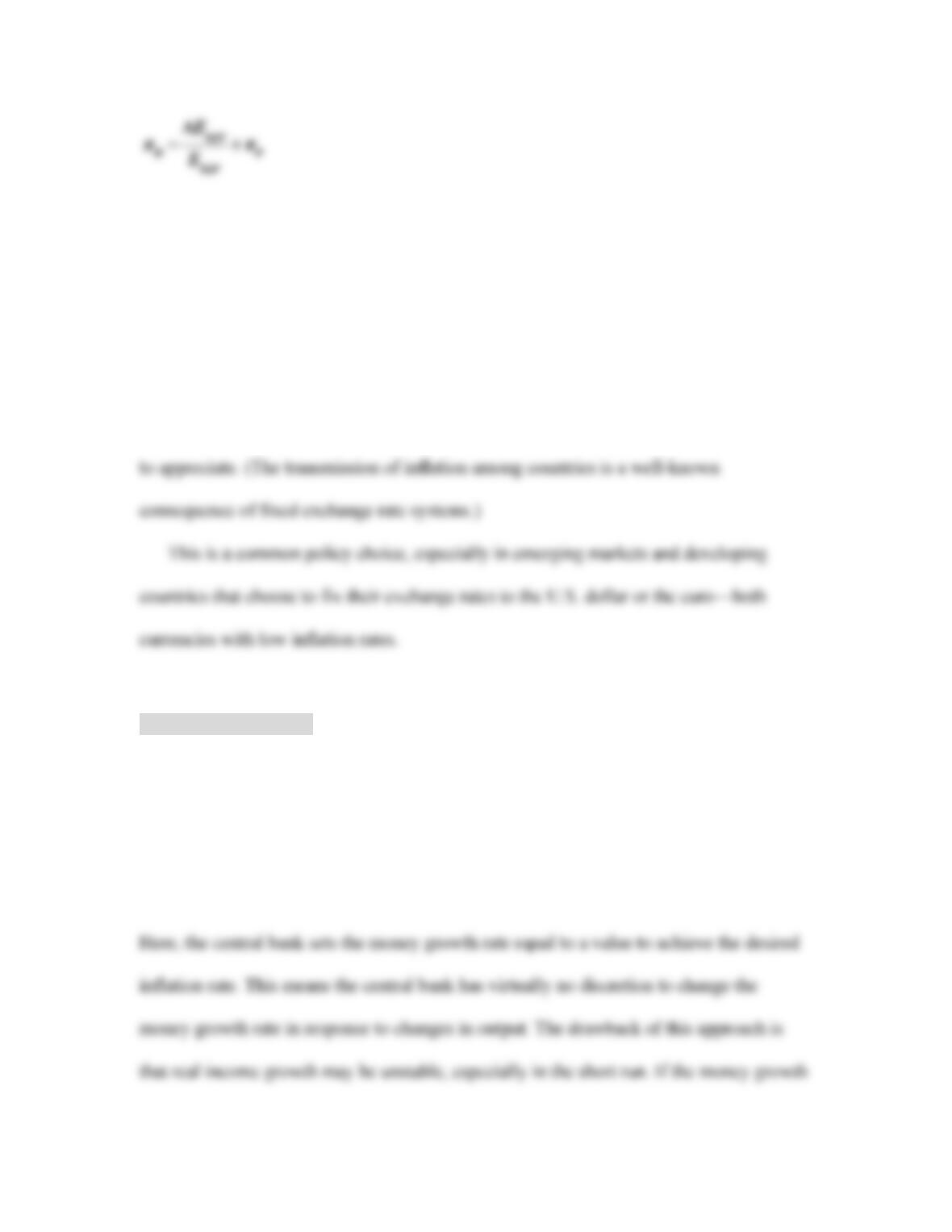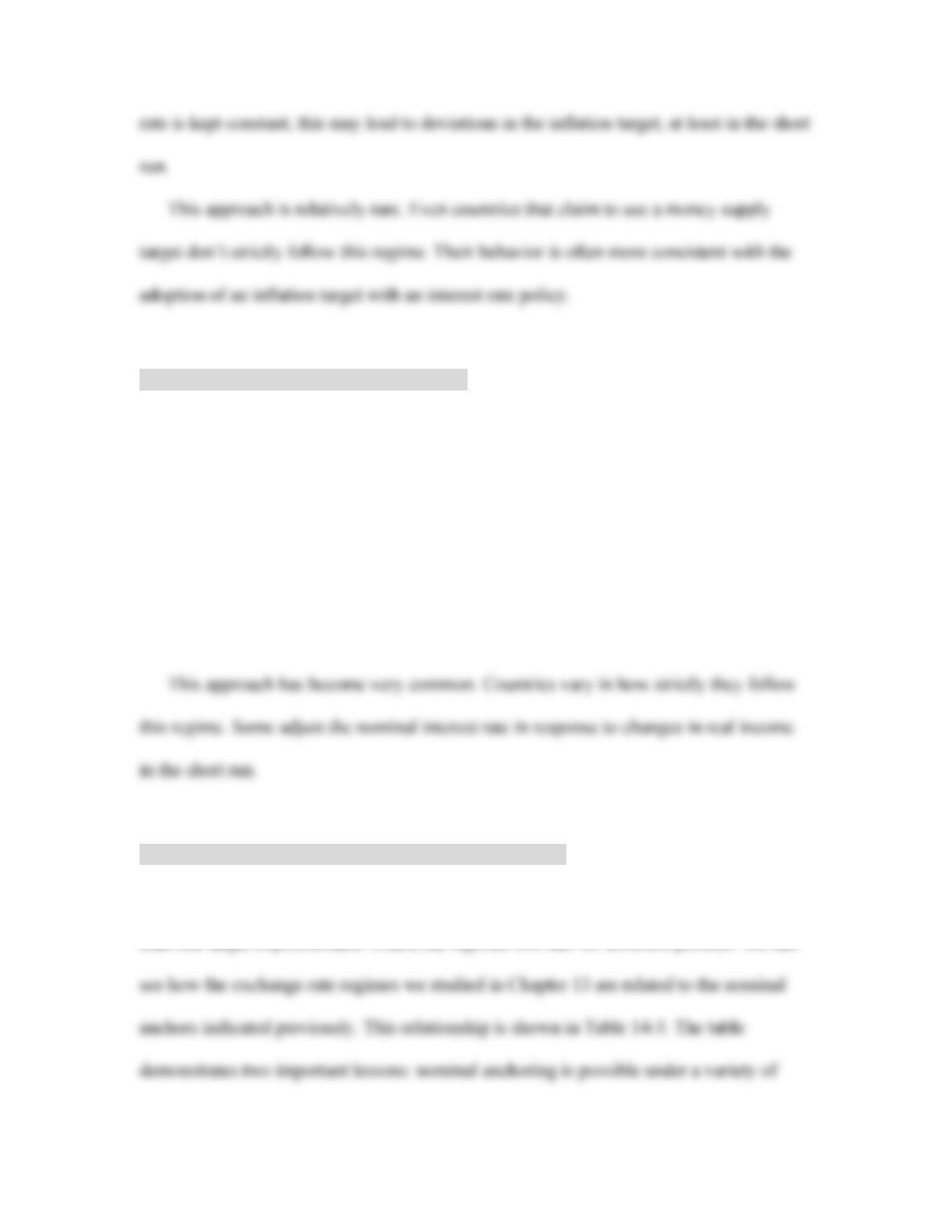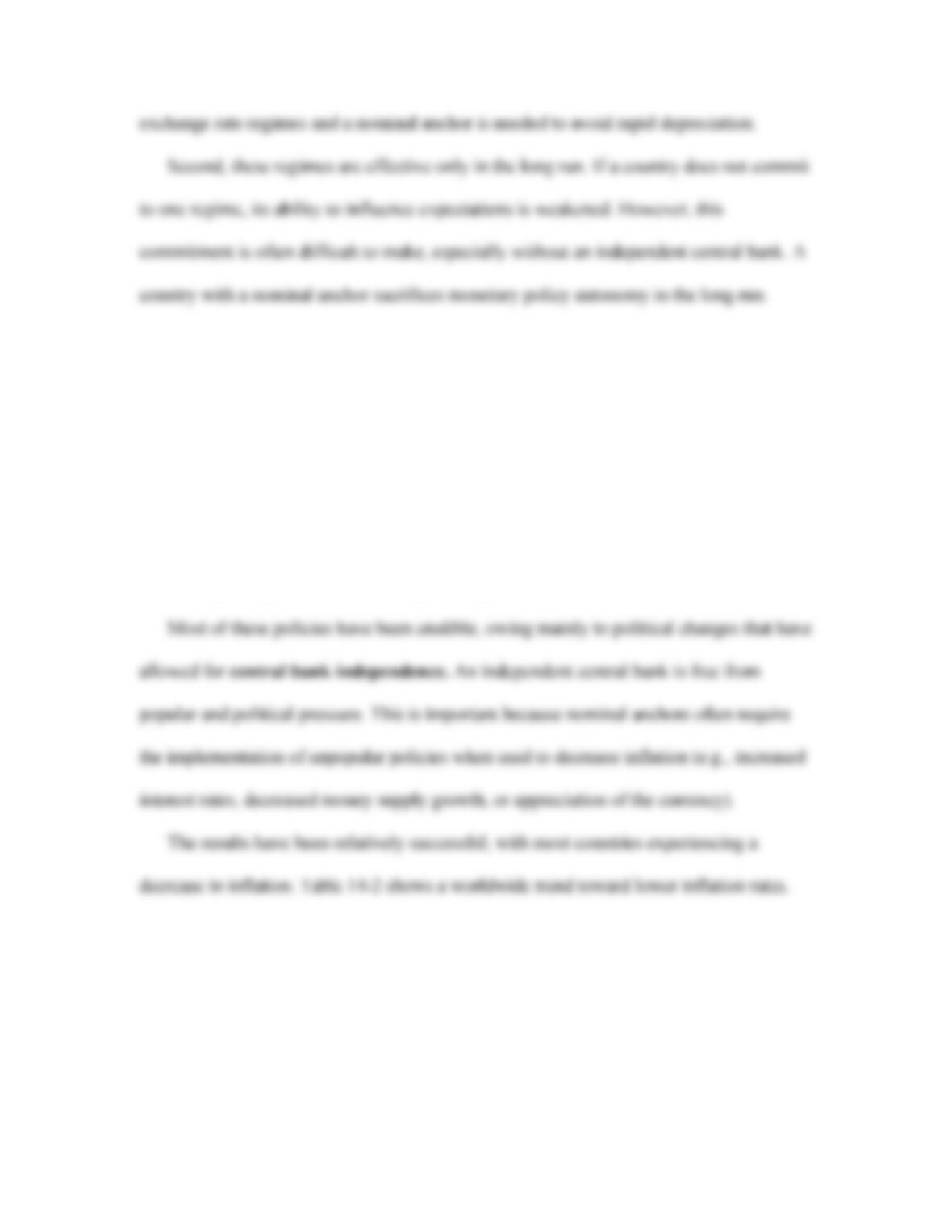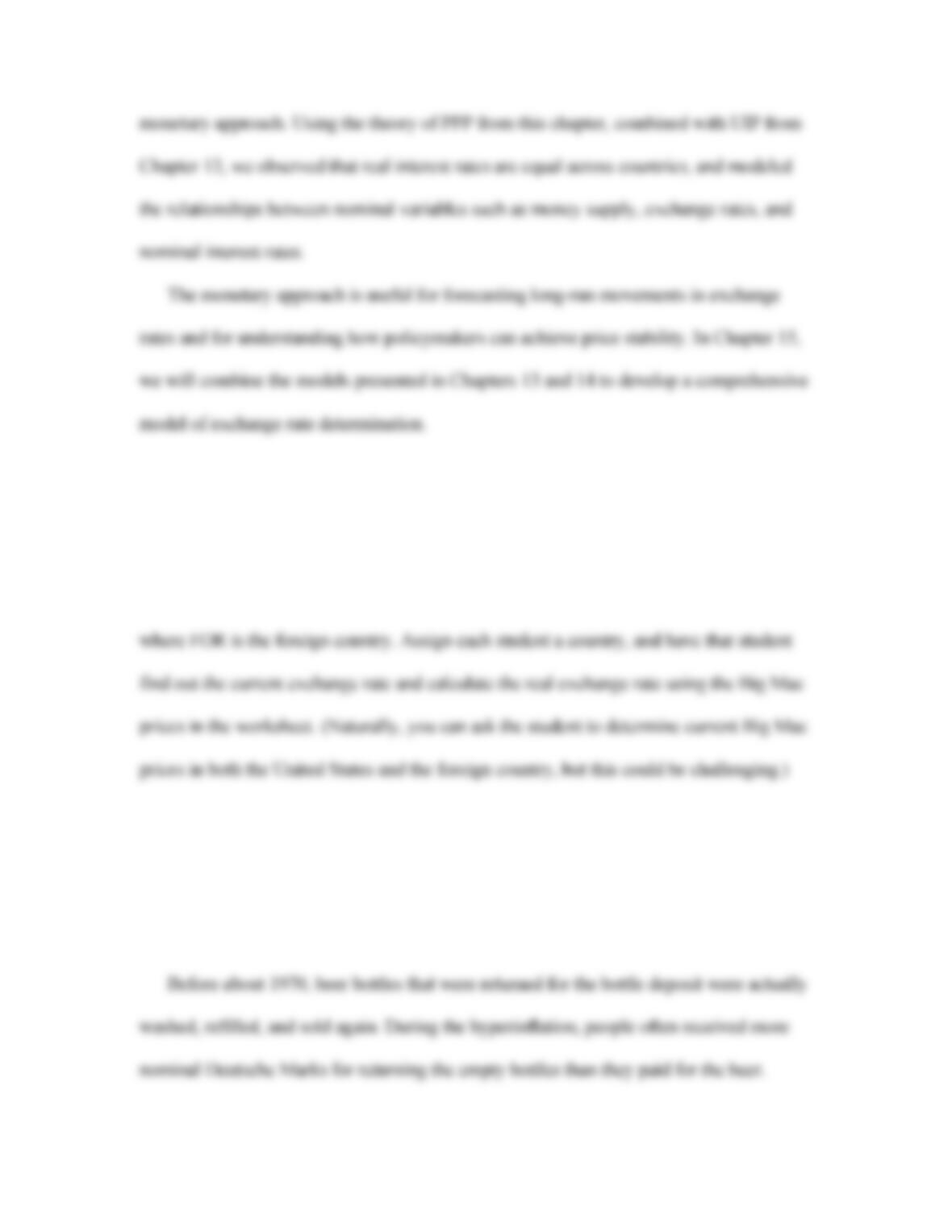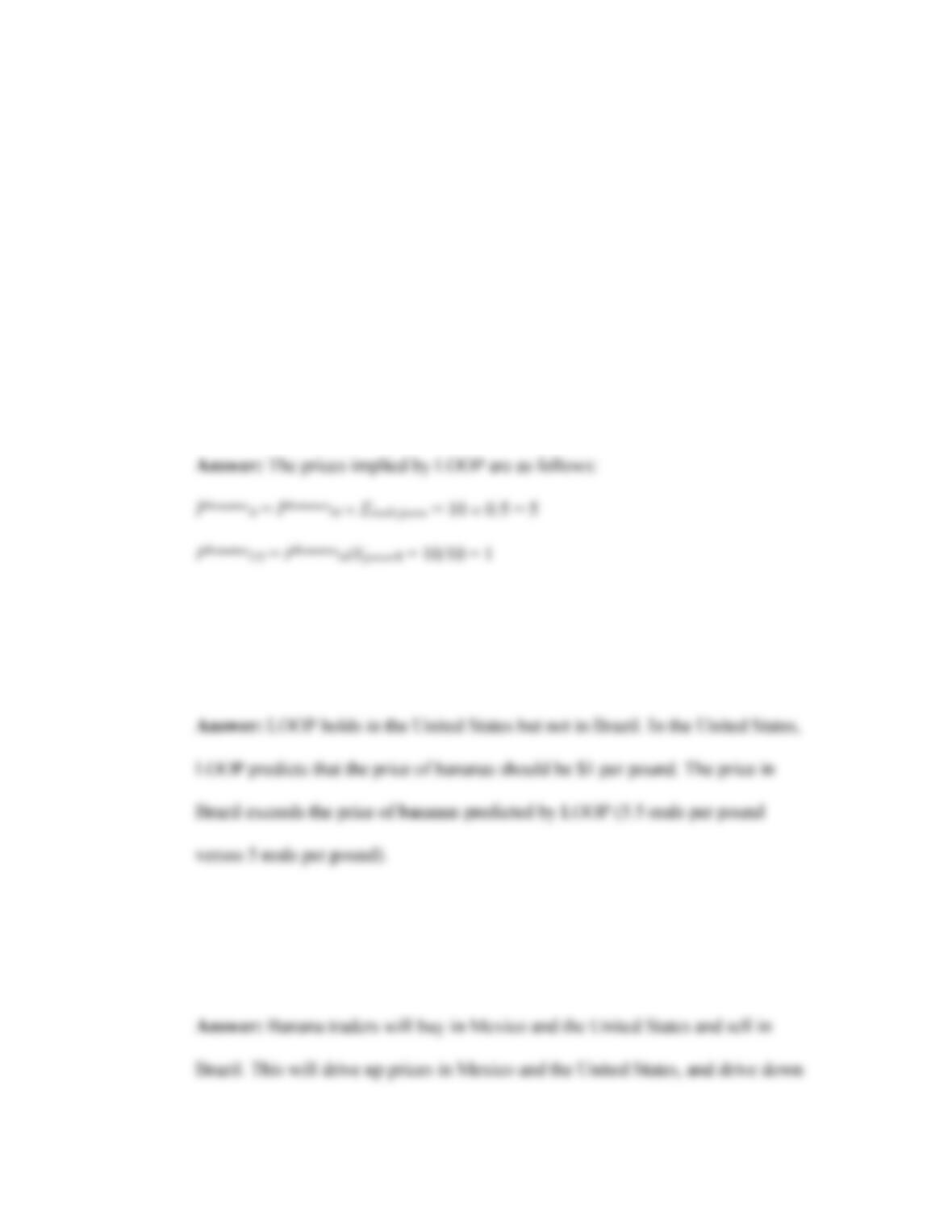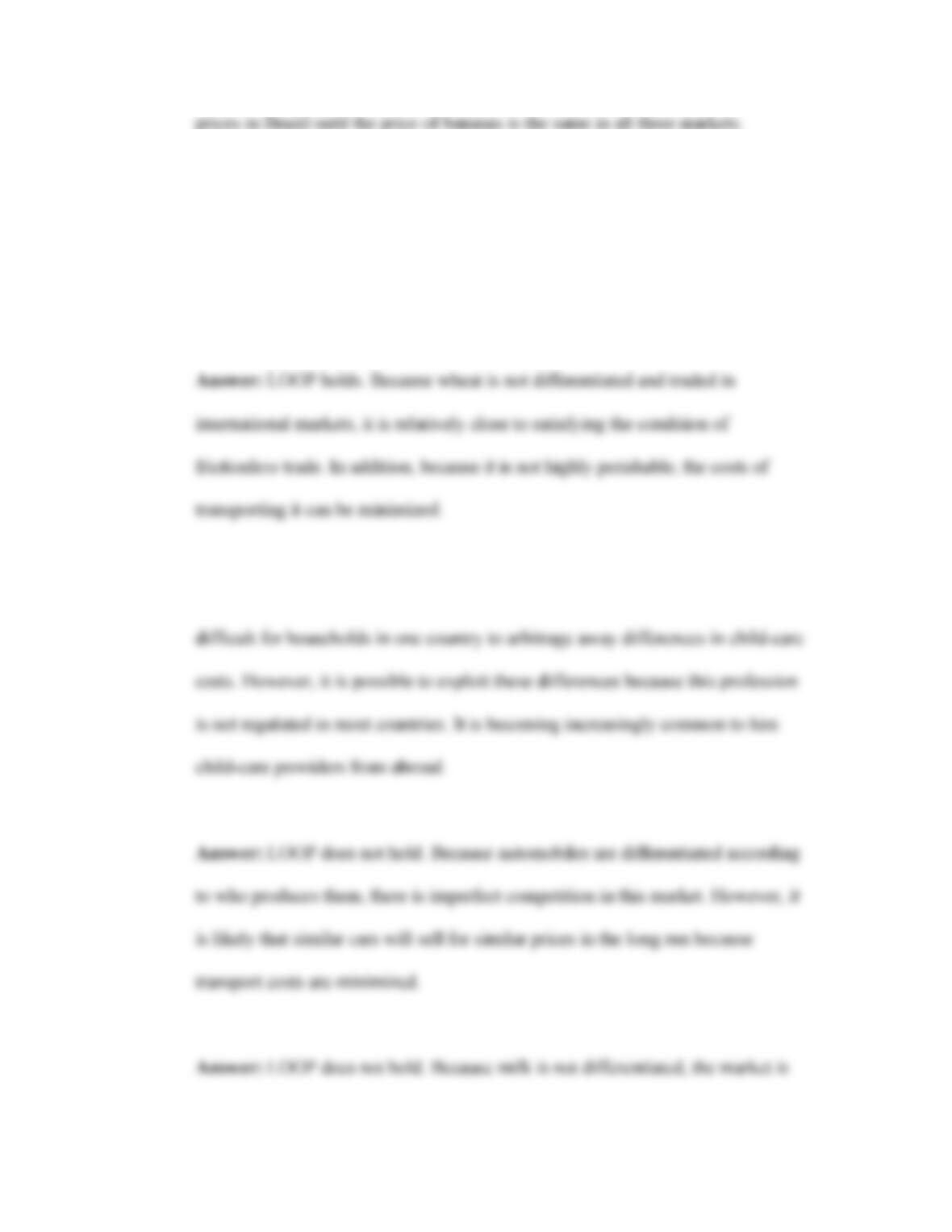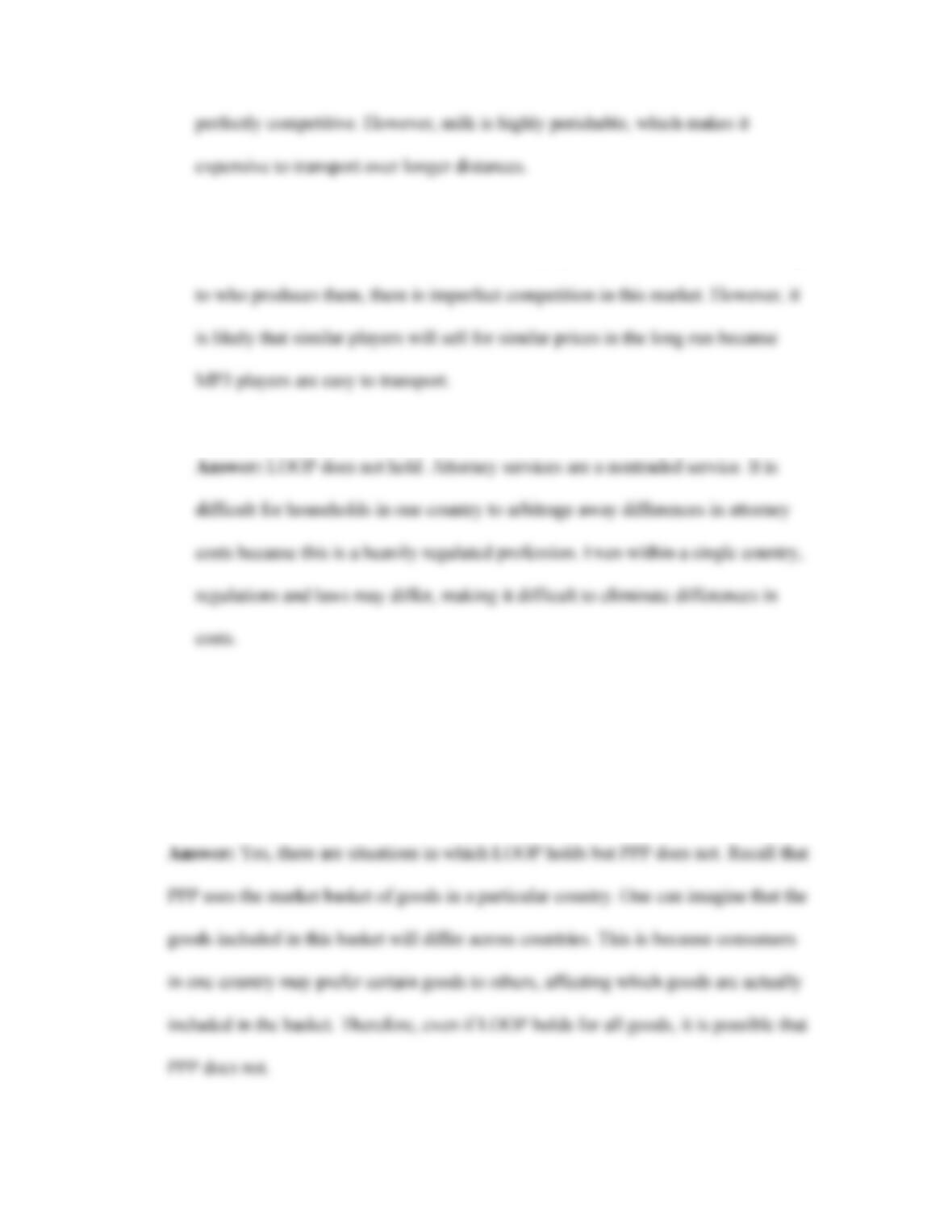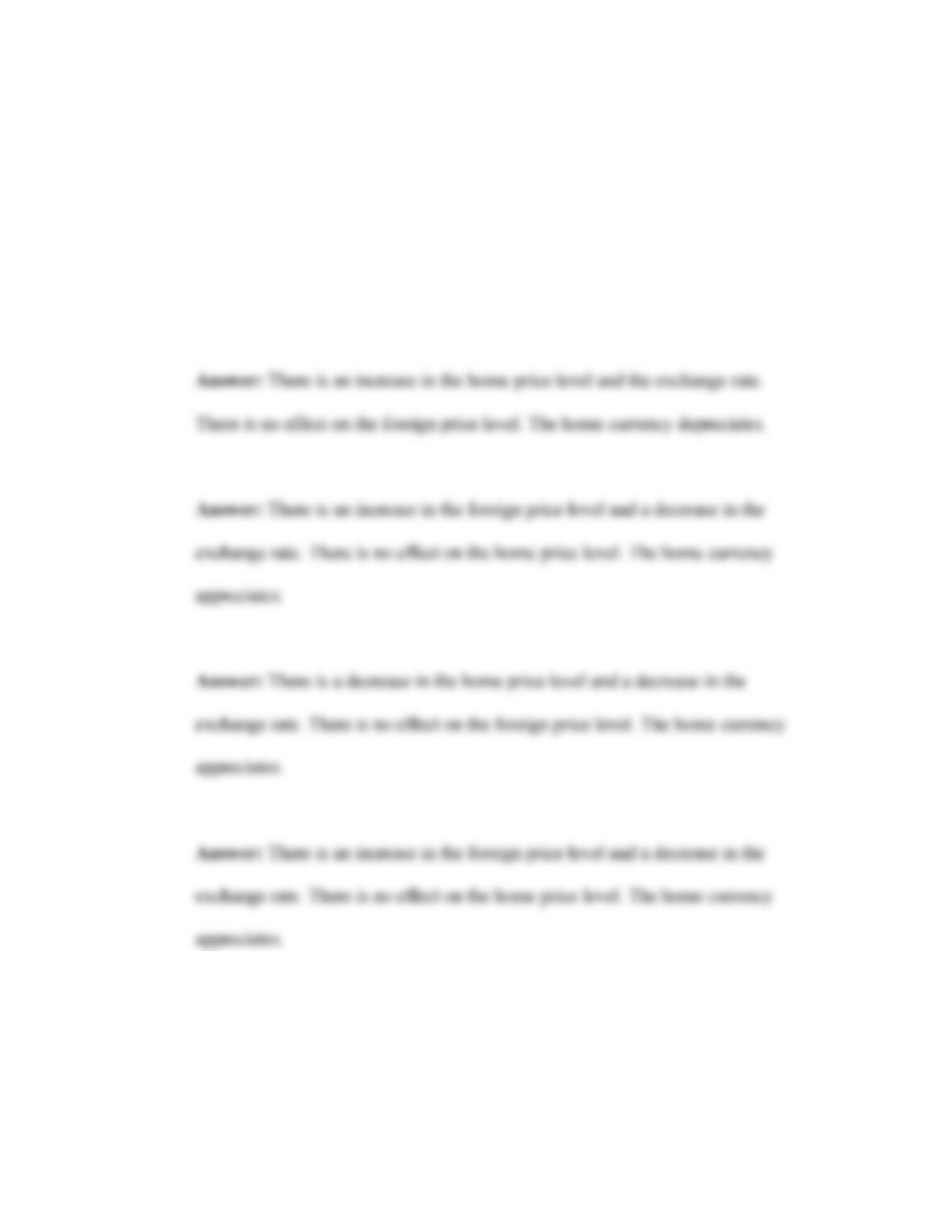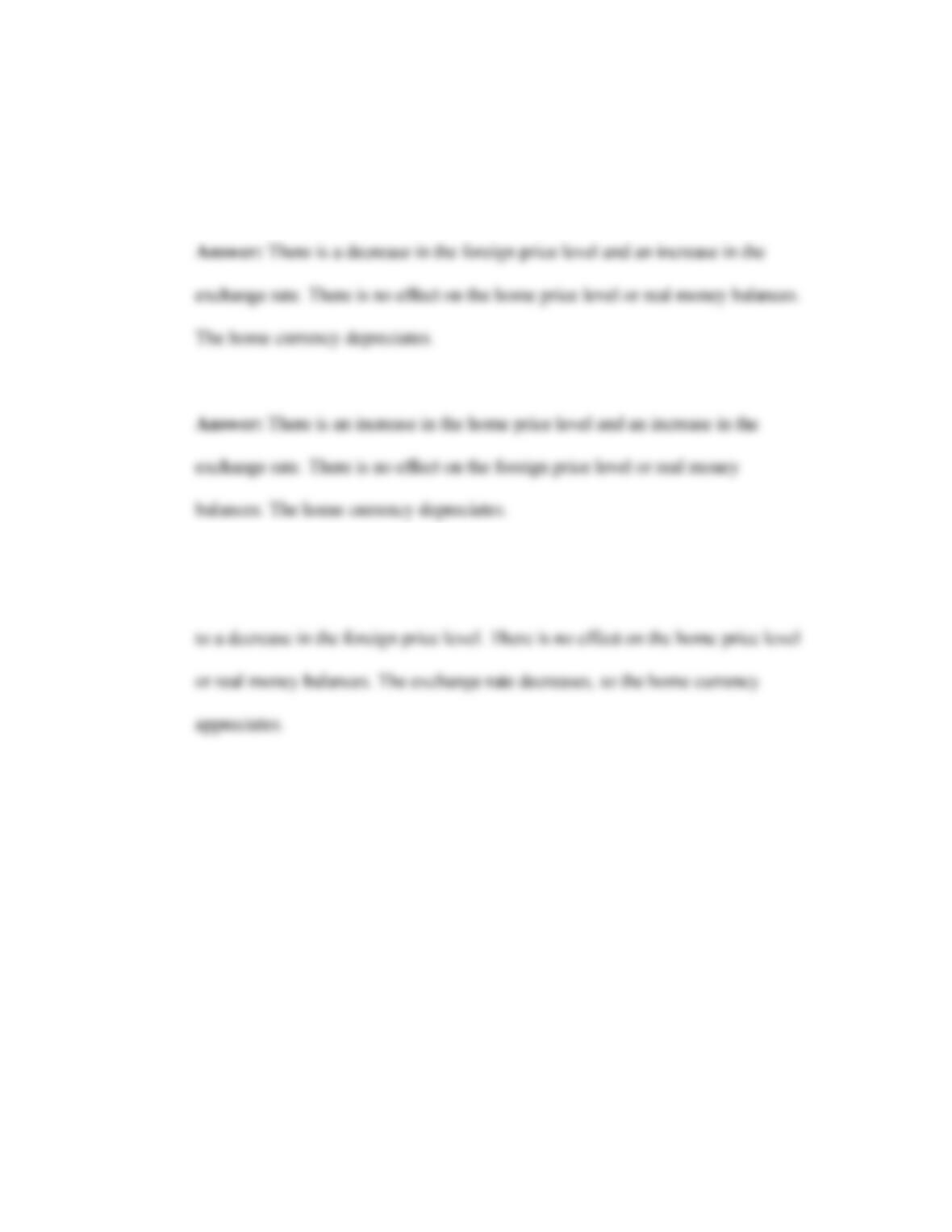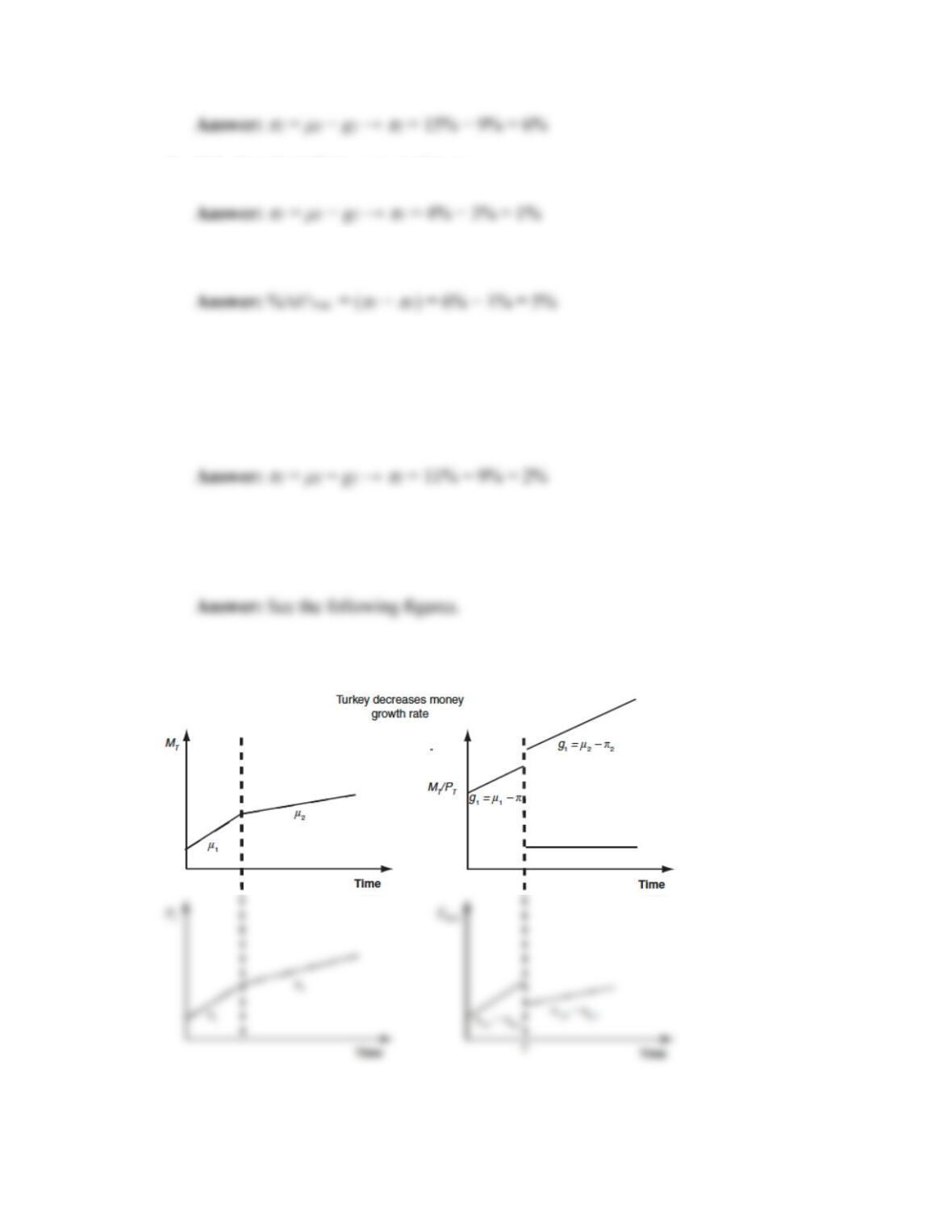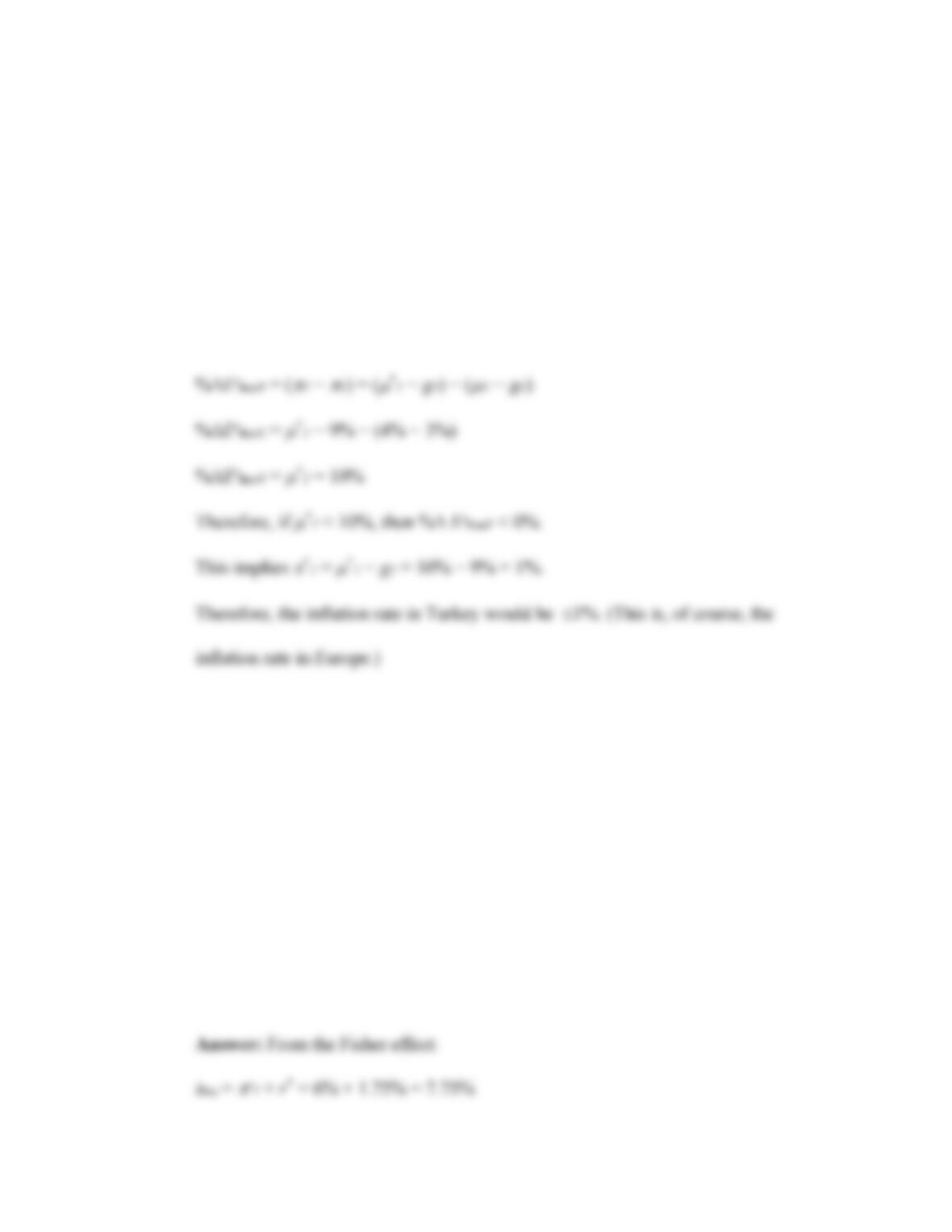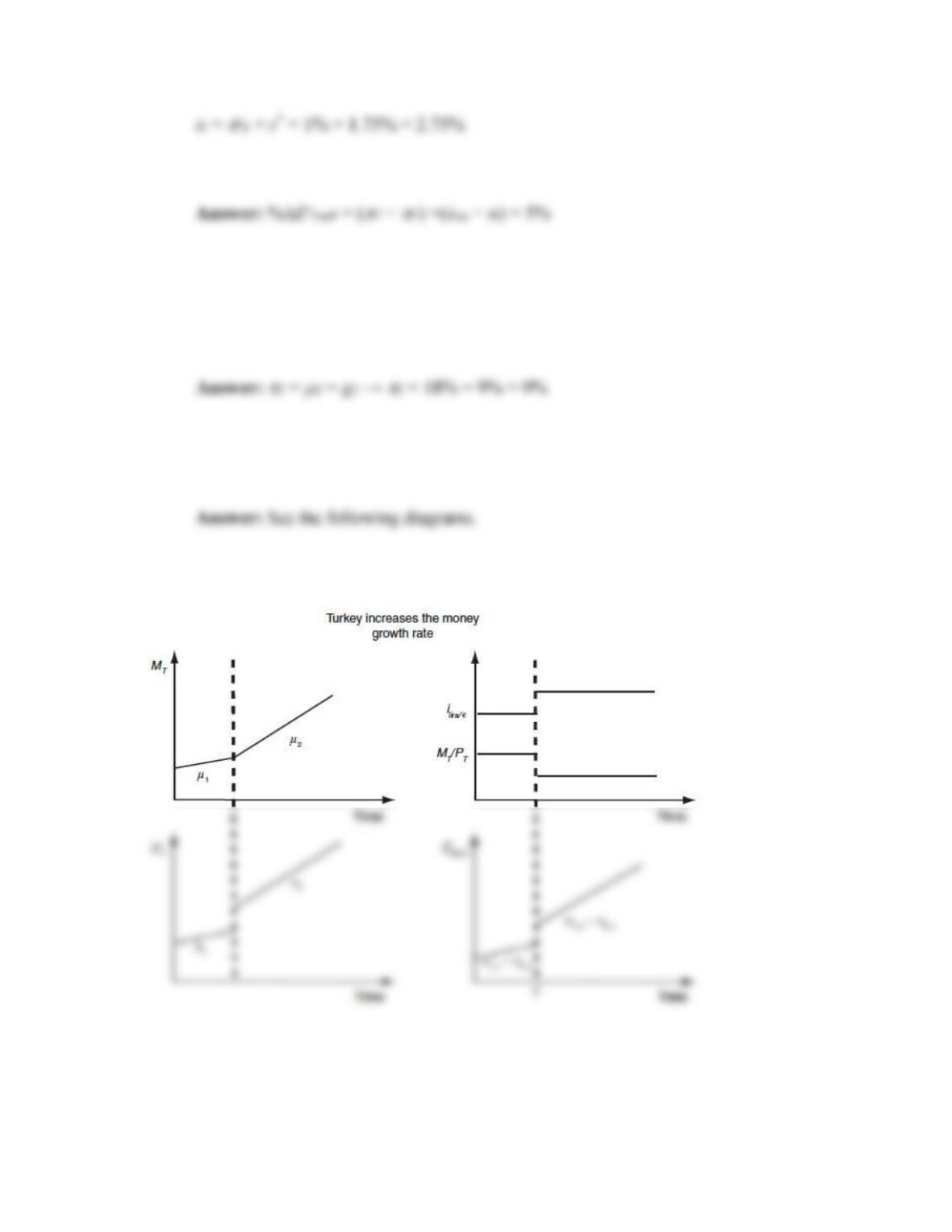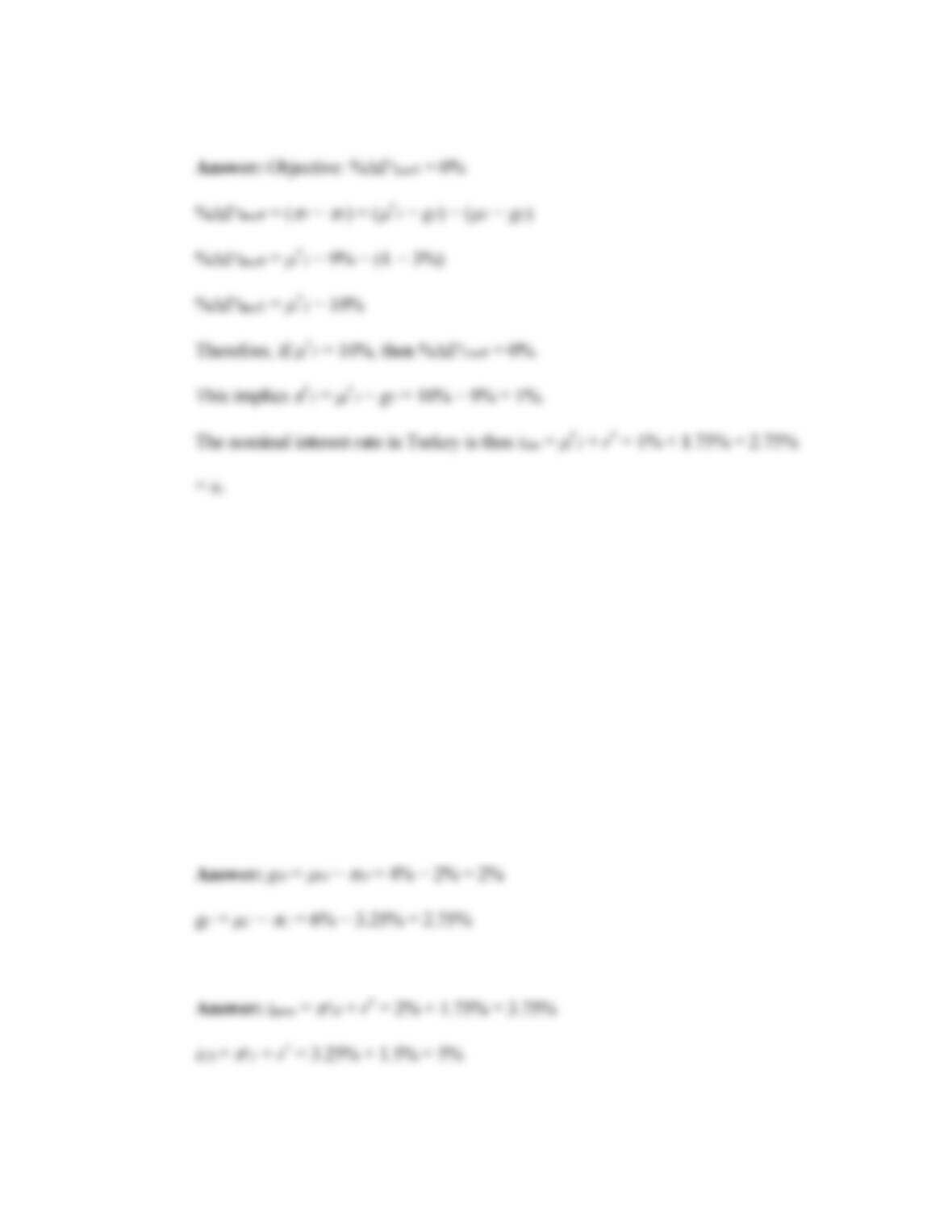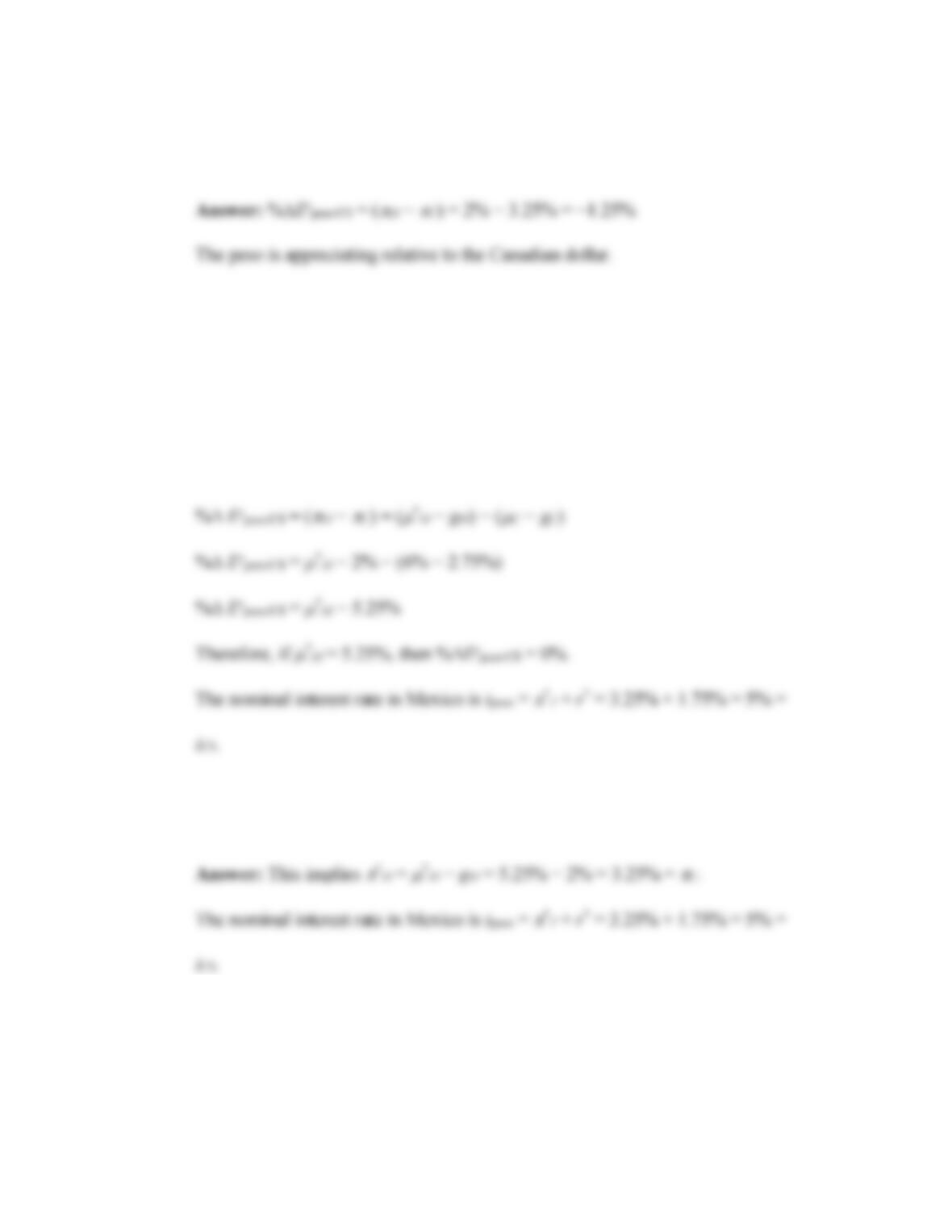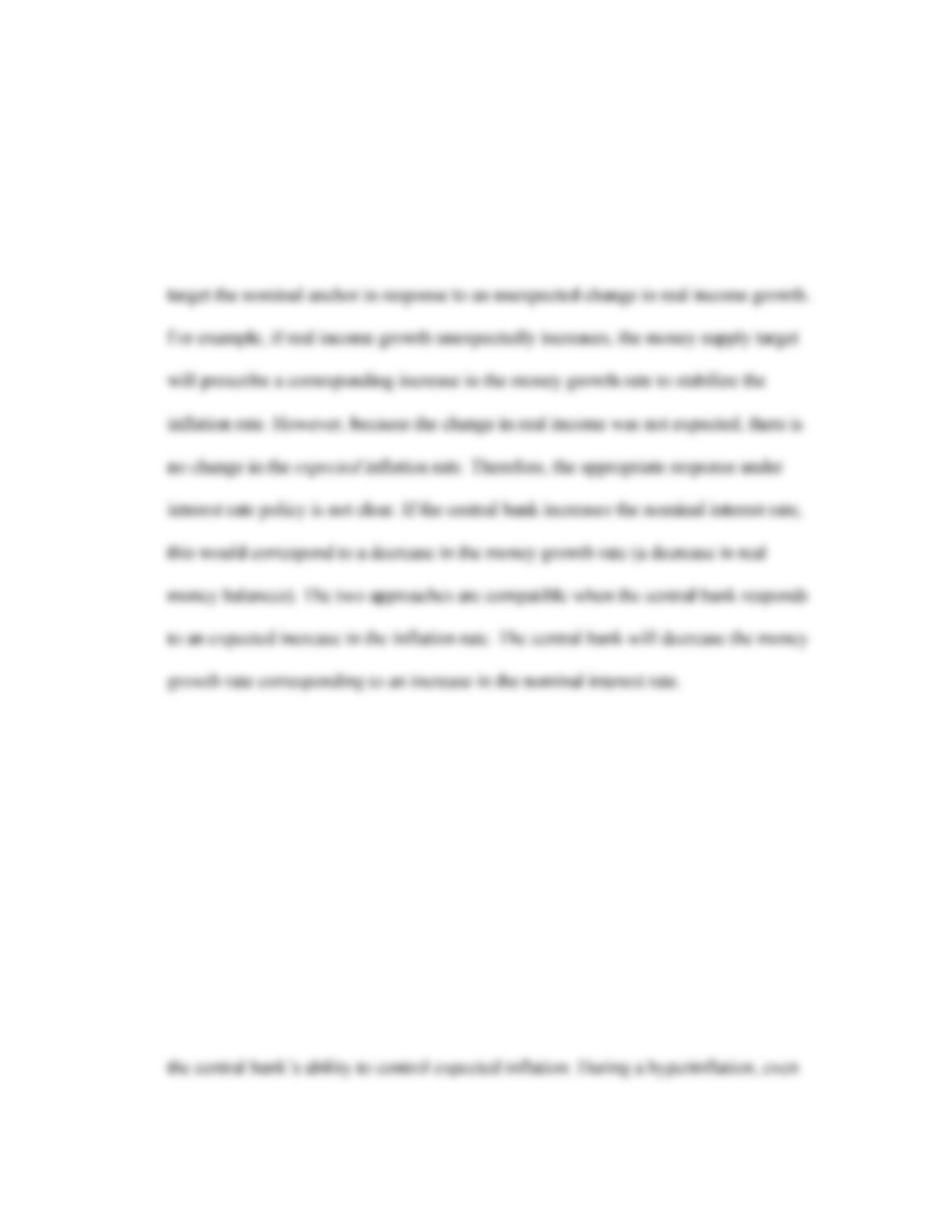IN-CLASS PROBLEMS
1. Suppose that two countries, Brazil and Mexico, produce bananas. Brazil uses the real,
Mexico uses the peso. In Mexico, bananas sell for 10 pesos per pound of bananas.
The exchange rate is 0.5 reals per peso, Ereals/pesos = 0.5. The peso–dollar exchange
rate is Epesos/$ = 10.
a. If LOOP holds, what is the price of bananas in Brazil? What is the price in the
United States?
b. Suppose the price of bananas in Brazil is 5.5 reals per pound. At the same time,
the price of bananas in the United States is $1.00 per pound. Based on this
information, where does LOOP hold?
c. How will banana traders respond to the previous situation? In which markets will
traders buy bananas? Where will they sell them? What will happen to the prices of
bananas in Mexico, Brazil, and the United States?
